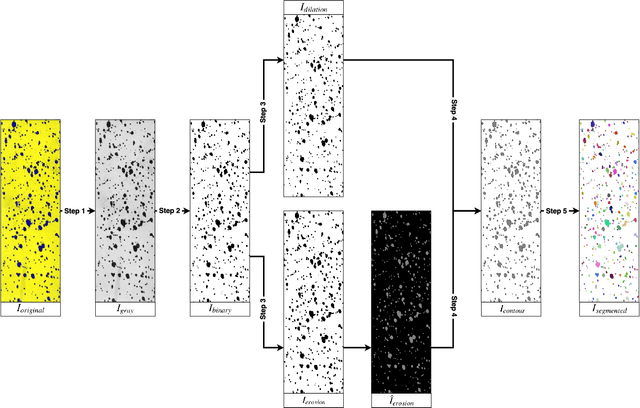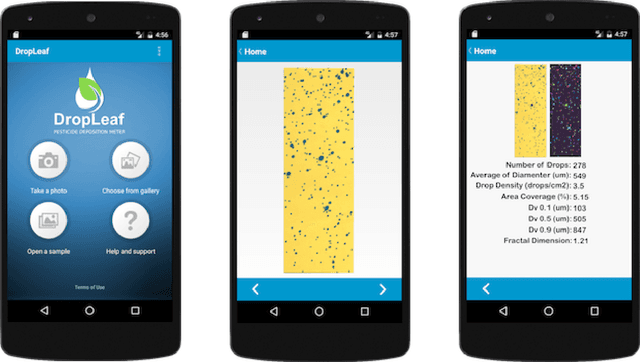A smartphone application to measure the quality of pest control spraying machines via image analysis
Paper and Code
Dec 16, 2017



The need for higher agricultural productivity has demanded the intensive use of pesticides. However, their correct use depends on assessment methods that can accurately predict how well the pesticides' spraying covered the intended crop region. Some methods have been proposed in the literature, but their high cost and low portability harm their widespread use. This paper proposes and experimentally evaluates a new methodology based on the use of a smartphone-based mobile application, named DropLeaf. Experiments performed using DropLeaf showed that, in addition to its versatility, it can predict with high accuracy the pesticide spraying. DropLeaf is a five-fold image-processing methodology based on: (i) color space conversion, (ii) threshold noise removal, (iii) convolutional operations of dilation and erosion, (iv) detection of contour markers in the water-sensitive card, and, (v) identification of droplets via the marker-controlled watershed transformation. The authors performed successful experiments over two case studies, the first using a set of synthetic cards and the second using a real-world crop. The proposed tool can be broadly used by farmers equipped with conventional mobile phones, improving the use of pesticides with health, environmental and financial benefits.
 Add to Chrome
Add to Chrome Add to Firefox
Add to Firefox Add to Edge
Add to Edge